Oxyrhynchus Papyri (vols. 1–15)
Digital Logos Edition
Overview
In the year 1898, Bernard P. Grenfell and Arthur S. Hunt discovered thousands of papyri fragments just outside the ruins of the ancient city of Oxyrhynchus. These fragments turned out to be one of the most important papyri discoveries of all time. The Oxyrhynchus Papyri (Vols. 1–15) provide access to the editors’ transcriptions of over 1,800 fragments of papyrus with detailed notes, translations, and commentary.
When Grenfell and Hunt began their excavations at Oxyrhynchus in 1896, they never could have anticipated the magnitude of the discoveries in this ancient city. Over one hundred years later, scholars continue to sift through the thousands of fragments, publishing volume after volume of transcriptions. For the first time, volumes one through fifteen will be available digitally with completely searchable text, exponentially increasing the value of these volumes with their copious notes, translation, and commentary.
Many of the more important literary papyri receive a dual treatment with the standard literal transcription and also a reconstructed text in modern style. All these texts become even more valuable with Logos Bible Software. Across a wide variety of important tools for studying the New Testament, they are discussed in hundreds of grammars, lexicons, critical apparatuses, commentaries, journal articles, and monographs.
Textual Criticism
Those who own Comfort and Barrett’s The Text of the Earliest New Testament Greek Manuscripts already know the great value of having access to the earliest New Testament papyri and being able to compare them with critical editions and textual apparatuses. The Oxyrhynchus papyri make it possible to compare and confirm the transcriptions of 17 of those early New Testament manuscripts, while also adding access to an additional 12 New Testament manuscript transcriptions not available in Comfort and Barrett’s work.
Even more exciting is the fact that the Oxyrhynchus papyri take textual criticism beyond the New Testament. In these 15 volumes, there are 20 papyri representing the Septuagint, which will provide an incredibly helpful resource beside the Göttingen Septuagint (65 Vols.). On top of that there are also 5 manuscripts from the Apostolic Fathers, 11 from the New Testament Apocrypha, 2 from Philo, and many more from a variety of Classical authors and documentary papyri.
Finally, unlike critical apparatuses that merely report readings without any sort of text critical discussion or Comfort and Barrett’s The Text of the Earliest New Testament Greek Manuscripts, which provides an introduction to the manuscript without any notes on specific portions of the papyri texts, the Oxyrhynchus Papyri (Vols. 1–15) provide both an introduction to the manuscripts themselves and on top of that, extended notes and commentary on variant readings and their relationship to other manuscripts.
Greek Grammar
One hundred and fifty years ago, one would commonly hear it said that the Greek New Testament was unique, or that is was written in “Holy Ghost Greek.” It was believed to be written in a form of Greek never in common use, fit only for a sacred and holy book. Scholars like Alfred Deissmann and James Hope Mouton changed all of that. And they could not have done it without the papyri discoveries at Oxyrhynchus. Moulton, in the preface to his Prolegomena, writes:
The immense stores of illustration, which have been opened to us by the discoveries of Egyptian papyri, accessible to all on their lexical side in the brilliant Bible Studies of Deissmann, have not hitherto been systematically treated in their bearing on the grammar of New Testament Greek. The main purpose of these Prolegomena has accordingly been to provide a sketch of the language of the New Testament as it appears to those who have followed Deissmann into a new field of research.
—Grammar of New Testament Greek, Prolegomena
Most volumes includes an index of grammatical terminology mentioned in the discussions of individual papyri and Logos Bible Software’s search capabilities make it possible to find these same grammatical discussions in those volumes that do not.
Lexicography
The discoveries at the city of Oxyrhynchus did no less than to revolutionize the creation of New Testament dictionaries and lexicons. It was the papyri discoveries that lead Frederick Danker to write these words about Thayer’s Greek-English Lexicon of the New Testament:
[The corrected edition of his Greek-English Lexicon] made Thayer a standard name in the English-speaking theological world until 1957. Nevertheless, discontent found repeated expression during this long period of valued service. And justly so, for even while the first lines of type were being set the seeds of Thayer’s obsolescence had already been sown.
—Frederick W. Danker, Multipurpose Tools for Bible Study, 111
And the transformative nature of the papyri for Greek lexicography is clearly seen in the dictionaries and lexicons published in the 20th Century. Moulton and Milligan’s Vocabulary of the Greek Testament alone contains nearly 6,800 reference to the Oxyrhynchus Papyri. Similar numbers are found in other Greek lexicon: LSJ contains nearly 10,000 references, BDAG has over 4,000, Ceslas Spicq’s Theological Lexicon of the New Testament has just under 2,600, and the Theological Dictionary of the New Testament contains more than a thousand references to the Oxyrhynchus Papyri.
Adding The Oxyrhynchus Papyri (Vols. 1–15) to your library will only increase the value of these lexicons, giving you the ability to test the claims of a lexicon’s entry directly against the texts it cites.
New Testament Backgrounds
The value of the Oxyrhynchus Papyri (Vols. 1–15) for studying New Testament backgrounds cannot be overestimated. Adolf Deissmann’s Light from the Ancient East is a preeminent example of how non-literary and documentary papyri can shed light on the social, cultural, and religious setting in which the New Testament was written. His hundreds of references to these papyri texts are a tribute to their value for understanding the social milieu of the New Testament. Likewise, the Dictionary of New Testament Backgrounds regularly relies on these papyri for illuminating the historical and cultural background of the New Testament.
And while only a few of the volumes have a specific subject index, in Logos Bible Software, the ability to search across all fifteen volumes for important cultural subjects such as “marriage,” “slavery,” or any number of other topics makes it possible to use every volume for the study of social and cultural issues. For example, P.Oxy. 722 in volume 4 sheds light on slavery and the freeing of slaves, dated to just a few decades after Paul’s letters were written. In this text, the slave’s ransom is paid by a private individual rather than by the slave herself. Moreover, the fact that the payment for a slave’s freedom was called a ransom, provides an important insight into Paul’s conceptualizing of sinner being free from their slavery to sin through Christ’s death and resurrection.

Key Features
- Easy access to hundreds of manuscripts illuminating the Biblical text
- Detailed notes on textual critical issues
- Excellent indixes of Greek words, proper names, spelling, and grammar
Praise for the Print Edition
[If] we could only recover letters that ordinary people wrote to each other without any thought of being literary, we should have the greatest possible help for the understanding of the language of the NT generally.
Grenfell and Hunt, the Dioscuri of research, have carried out epoch-making excavations at Oxyrhynchus and other places and have published their treasures with astonishing promptitude and masterly accuracy.
[The] literary texts [in volume four] are not . . . merely tantalizing scraps, but are real additions to our knowledge of classical literature.
—The Journal of Hellenic Studies
After discarding as worthless thousands upon thousands [of fragments], [Grenfell and Hunt] still had twenty-three hundred pieces of which some three hundred were classical or theological literature and the rest documents of the first seven centuries of our era.
—The Yale Review
Product Details
- Title: The Oxyrhynchus Papyri: Edited with Translation and Notes (Vols. 1–15)
- Publisher: Egypt Exploration Society, 1898–1922
- Editors: Bernard P. Grenfell, Arthur S. Hunt
- Volumes: 15
- Pages: 4,891
Individual Titles
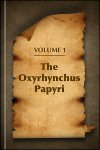
Biblical Fragments
- Matthew 1
- Mark 10–11
Extra-biblical Fragments
- Gospel of Thomas
- Acts of Paul and Thecla
Classical Fragments and Other Papyri
- Sappho
- Alcman
- Aristoxenus
- Two Classical Comedies
- A Chronological Work
- Thucydides
- Herodotus
- Homer, Iliad
- Sophocles, Oedipus Tyrannus
- Plato, Laws, Book 9
- Plato, Republic
- Demosthenes, De Corona
- Xenophon, Hellenica
- Vergil, Aeneid
- Various Non-literary and Documentary Papyri
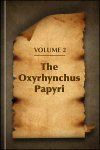
Biblical Fragments
- John 1 and 20
- Romans 1
Classical Fragments and Other Papyri
- Menander
- Aristophanes
- Unknown Tragedy
- Unknown Epic
- Rhetorical Exercises
- Treatise on Meter
- Scholia on the Iliad
- Homer, Iliad
- Euripides, Phoenissae
- Thucydides
- Xenophon, Hellenica
- Xenophon, Oeconomicus
- Plato, Laches
- Plato, Phaedo
- Demosthenes, De Corona
- Demosthenes, Contra Timocratem
- Various Non-literary and Documentary Papyri
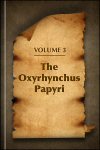
Biblical and Apocryphal Fragments
- Matthew 1–2
- 1 John 4
- Apocalypse of Baruch 12–14
Early Christian Fragments
- Shepherd of Hermas
- Early Christian Prayer
- Unknown Theological Fragments
Classical Fragments and Other Papyri
- Pindar, Odes
- Menander
- Lost Rhetorical Treatise
- Life of Alcibiades
- Julius Africanus
- Scholia on the Iliad
- Euripides, Andromache
- Euripides, Media
- Thucydides
- Plato, Gorgias
- Plato, Republic
- Aeschines, In Ctesiphontem
- Aeschines, De Falsa Legatione
- Demosthenes, Contra Aristocratem
- Demosthenes, De Pace
- Demosthenes, De Corona
- Xenophon, Anabasis
- Directions for Wrestling
- Medical Fragment
- Grammatical Rules
- Various Non-literary and Documentary Papyri

Biblical Fragments
- Genesis 14, 15, 19–20, 24, 27
- Hebrews 2–5, 10–11:13, 11:28–12
Extra-biblical Fragments
- Gospel of Thomas
Classical Fragments and Other Papyri
- Pindar
- Aristotle
- Aristonxenus
- Homer, Iliad
- History of Sicily
- Apollonius Rhodius, Argonautica
- Sophocles, Electra
- Theocritus
- Herodotus
- Thucydides
- Xenophon, Cyropaedia
- Theophrastus, Characters
- Demosthenes, De Corona
- Aeschines, In Ctesiphontem
- Isocrates, Contra Sophistas
- Various Non-literary and Documentary Papyri
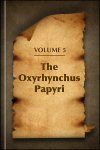
Extra-biblical Fragments
- P.Oxy. 840 Unknown Gospel
Classical Fragments and Other Papyri
- Pindar, Paeans
- Theopompus, Hellenica
- Plato, Symposium
- Isocrates, Panegyricus
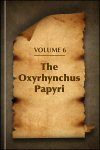
Biblical Fragments
- Psalm 68 and 70
- Amos 2
- John 2
- Revelation 16
Extra-biblical Fragments
- Acts of Peter
- Acts of John
- Apocryphal Acts
Classical Fragments and Other Papyri
- Euripides, Hypsipyle
- Commentary on Thucydides
- Archilochus
- Menander
- Scholia on Aristophanes’ Acharnians
- Epitome of Herodotus
- Oration against Demosthenes
- Poetic Fragments
- Prose Fragments
- Latin Fragments
- Hesiod, Theogonia
- Apollonius Rhodius, Argonautica
- Sophocles, Antigone
- Euripides, Hecuba
- Thucydides
- Plato, Euthydemus and Lysis
- Demosthenes, In Aristogitonem
- Demosthenes, In Aristocratem
- Directions for Wrestling
- Various Non-literary and Documentary Papyri
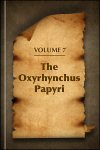
Biblical and Apocryphal Fragments
- Genesis 2, 3
- 1 Corinthians 7–8
- Philippians 3, 4
- 6 Ezra
Classical Fragments and Other Papyri
- Callimachus
- Treatise on Literary Composition
- Menander
- Historical Fragment
- Plato, Phaedrus
- Xenophon, Cyropaedia
- Chariton
- Various Non-literary and Documentary Papyri

Biblical and Apocryphal Fragments
- Old Latin Version of Genesis 5–6
- Exodus 31, 32
- Exodus 40
- New Recension of Tobit 2
- Matthew 4
- Hebrews 9
- Revelation 1
- Revelation 3, 4
- Gnostic Gospel
Classical Fragments and Other Papyri
- Scholia on Iliad
- Satyric Drama
- Hesiod, Opera
- Bacchylides, Dithyrambs
- Herodotus
- Demosthenes, Contra Boeotum
- Demosthenes, De Falsa Legatione
- Isocrates
- Cicero
- Vergil, Aeneid
- Various Non-literary and Documentary Papyri
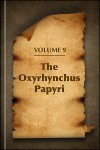
Biblical Fragments
- Genesis 16
- Genesis 31
- Joshua 4–5
- Matthew 6
- Matthew 10–11
- James 2-3
Hellenistic and Early Christian Fragments
- The Shepherd of Hermas
- Philo
Classical Fragments and Other Papyri
- Sophocles, Ichneutae
- Sophocles, Eurypylus
- Satyrus, Life of Euripides
- Euripides, Phoenissae
- Euripides, Orestes
- Apollonius Rhodius
- Thucydides
- Xenophon, Anabasis
- Demosthenes, De Falsa Legatione
- Isocrates, Trapeziticus
- Pseudo-Hippocrates
- Various Non-literary and Documentary Papyri
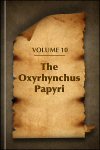
Biblical Fragments
- Leviticus 16
- Psalm 7, 8
- Matthew 7
- John 15, 16
- Revelation 5, 6
Non-canonical Gospel Fragments
- P.Oxy. 1224 Unknown Gospel
Classical Fragments and Other Papyri
- Sappho
- Alcaeus
- Arguments of Menander’s Plays
- Menander, Epitrepontes
- Menander, Colax
- Fragments of Comedies
- Chrestomathy
- Greeks and Jews before Trajan
- Apollonius, Argonautica
- Herodotus
- Thucydides
- Plato, Politicus
- Babrius, Fables
- Achilles Tatius, Clitophon and Leucippe
- Cicero, In Verrem and Pro Caelio
- Various Non-literary and Documentary Papyri
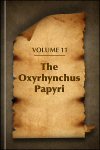
Biblical and Theological Fragments
- Leviticus 27
- Psalm 82, 83
- 1 Peter 5
- Romans 8
- Calendar of Church Services
Classical Fragments and Other Papyri
- Philo
- Hesiod, Catalogue
- Alcaeus
- Bacchylides, Scolia
- Callimachus, Aetia
- Callimachus, Iambi
- Antiphon Sophistes
- History of Scyon
- Fragment of an Attic Orator
- Heraclides Lembus, Epitome of Hermippus
- Sophocles, Oedipus Tyrannus
- Euripides, Medea and Orestes
- Aristophanes, Clouds with Scholia
- Aristophanes, Frogs
- Aristophanes, Peace and Knights
- Aristophanes, Wasps
- Herodotus
- Thucydides
- Demosthenes, De Corona
- Demosthenes, Contra Midiam
- Livy
- 9 Fragments of Homer’s Iliad
- 5 Fragments of Homer’s Odyssey
- Various Non-literary and Documentary Papyri
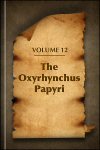
Volume 12 of the Oxyrhynchus Papyri includes 183 Non-literary and Documentary Papyri. Providing a fascinating look into the everyday lives of people in the Greco-Roman world, these papyri texts give valuable insight into the cultural background of the New Testament.
Non-literary and Documentary Papyri
- Edicts and Circular Letters
- The Senate of Oxyrhynchus
- Official Documents
- Taxation
- Declarations to Officials
- Petitions
- Notifications to the Archidicastae
- Religious Documents
- Private Correspondence

Biblical and Apocryphal Fragments
- New Recension of Tobit 12
- Ecclesiasticus (Sirach) 1
- John 6
- Acts 26
- 1 Thessalonians 4 through 2 Thessalonians 1
Early Christian Fragments
- Shepherd of Hermas
- Treatise on the Passion
- Homily on Spiritual Warfare
- Homily to Monks
- Homily Concerning Women
Classical Fragments and Other Papyri
- Pindar, Dthyrambs
- Menander
- Lysias, Against Theomnestus
- Hyperides, For Lycophron
- Aeschines Socraticus, Alcibiades
- Philosophical Work
- Ephorus
- Essay on Literary Criticism
- Oration on the Cult of Caesar
- List of Early Athenian Archons
- Sophocles, Ajax
- Euripides, Orestes
- Aristophanes, Plutus
- Theocritus
- Herodotus
- Thucydides
- Plato, Protagoras
- Aeschines, In Ctesiphontem
- Various Non-literary and Documentary Papyri
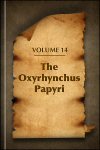
Volume 14 of the Oxyrhynchus Papyri includes 188 Non-literary and Documentary Papyri. Opening up a direct window in the everyday life of the people of Greco-Roman world, these documents hold significant value for the study of the culture surrounding the New Testament and early church.
Non-literary and Documentary Papyri
- Contracts
- Private Accounts
- Taxing Accounts
- Official Correspondence
- Private Correspondence

Biblical and Theological Fragments
- Aristides, Apology
- Psalm 1
- John 8
- John 16
- Didache 1–3
- Shepherd of Hermas
- Constantinopolitan Creed
- Various Homilies
- Christian Hymn with Musical Notation
Classical Fragments and Other Papyri
- Sappho
- Alcaeus
- Ibycus
- Pindar, Paean
- Callimachus, Sosibi Victoria
- Arostic Epigrams
- Antiphone Sophistes
- Anonymous work on Alexander the Great
- Oratorical Fragment
- Miscellaneous Biographies
- Glossaries
- Sophocles, Trachiniae
- Theocritus
- Aratus
- Plato, Republic
- Plato, Phaedo
- Demosthenes
- Isocrates, Ad Demonicum
- Codex Theodosianus
- Homer, Iliad
- Homer, Odyssey
This title is included in the following collections
You can save when you purchase this product as part of a collection.
2025 Logos Portfolio (Français...
$3,999.99$2,799.99Logos 9 Diamond Legacy Library
$2,999.99$2,999.99Portfolio-Bibliothek 2025
$3,999.99$3,399.99Akademische Portfolio-Biblioth...
$3,999.99$3,399.99
- $4,749.99
- $4,749.99
- $4,749.99
- $11,399.99
- $11,399.99
- $21,749.99
- $24,999.99
About the Editors
Bernard P. Grenfell (1869–1926) was a Fellow of Queen’s College, Oxford, and of the British Academy. Known primarily as a classical scholar and Egyptologist, he was appointed Professor of Papyrology at Oxford in 1908.
Arthur S. Hunt (1871–1934) was a papyrologist and Fellow of Queen’s College, Oxford. With Bernard P. Grenfell, Hunt excavated and published thousands of papyri fragments from the ancient city of Oxyrhynchus and other archeological sites in Egypt.
Reviews
1 rating
Philip
2/18/2025
I really enjoy using "Oxyrhynchus Papyri (vols. 1–15)" because BDAG has many useful links to it. In-depth research of how a word was used in daily transactional contexts can shed tremendous light on subtitle nuances in linguistic peculiarities. Each article in this resource has a nice back-ground introduction with helpful information on each document. The information is followed by the text of the artifact in searchable Greek format as expected. Following the Greek text, there is a very good English translation directly below the Greek text. I have the Duke Databank installed and have used it with wonderful results; especially with the Logos AI "Summarize" feature. However, some of the links in BDAG didn't connect to the POxy resource listing before buying this package. After purchasing this, ALL the links work! Hopefully Logos will improve the subscription translation feature for Greek in the future. For the time being, Google Translate will get you "close enough" for the Duke Databank resources if you are rusty on Greek and want a second opinion. Clicking on a Greek word, takes me to one of the Greek Analytical lexicons that I purchased. That separate resource, not included in this package, tells me the morphological information if needed as well as the root word. From the articles that I have read in this resource, the English translation is better than Google is capable of right now. I am very pleased with my purchase.Steve Rudd
11/29/2017
OXYRHYNCHUS PAPYRI: useless to the laymen because there are almost no translations of any of the papyri. The anti-religious bias of the authors seeps out of every page in that they call New Testament fragments, "religious" texts so you cannot easily find them without looking at all 15 volumes. Then, no translations. Only about 8 plates per book, many of them very poor or in black and white. Very disappointed. Got a refund.
Michel Pauw
5/28/2015
Does this Logos edition have images of the papyri? That would be a great additional feature compared to the Duke Databank.
Christopher B
5/16/2013
Given that the Oxyrhynchus Papyri were included in a massive free download of the Duke Databank of Documentary Papyri a little while ago (thanks Logos!), it would be helpful to read a Blog entry about what this edition of the work offers in terms of additional features.
